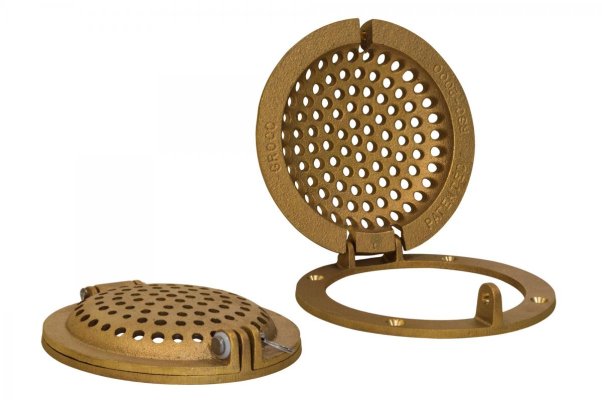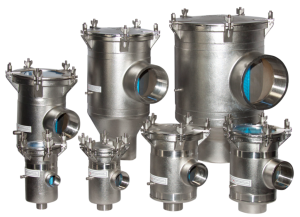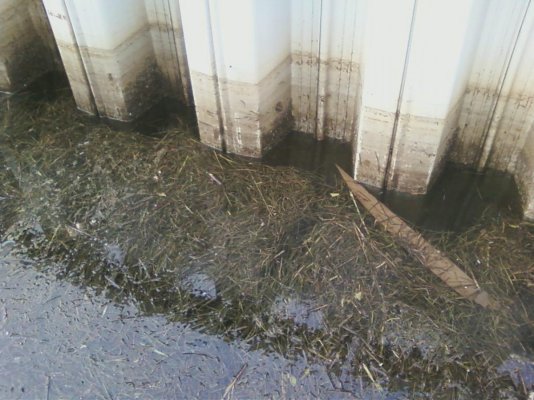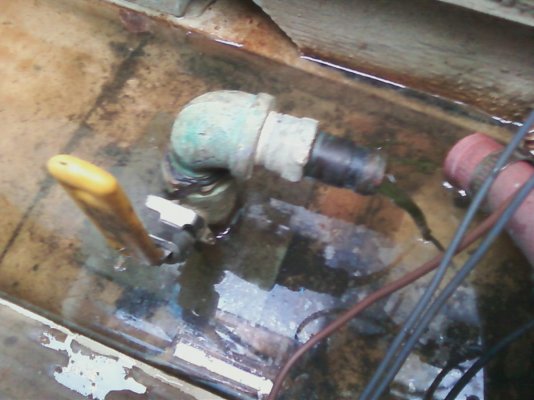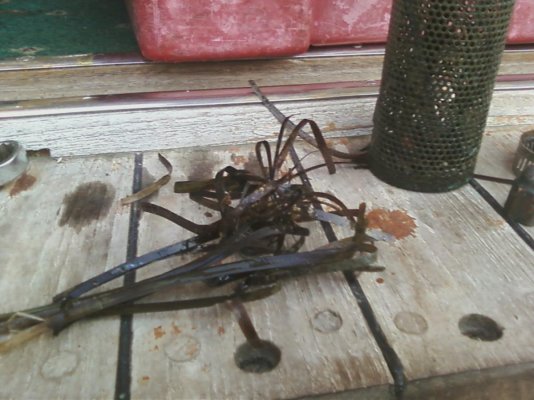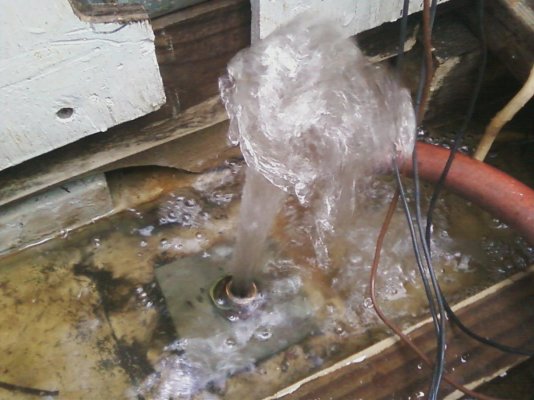You are using an out of date browser. It may not display this or other websites correctly.
You should upgrade or use an alternative browser.
You should upgrade or use an alternative browser.
A/C thru hull intake
- Thread starter lipets
- Start date
The friendliest place on the web for anyone who enjoys boating.
If you have answers, please help by responding to the unanswered posts.
If you have answers, please help by responding to the unanswered posts.
bykpjfk
Veteran Member
Just joining in the discussion to see what others say. I'm in the Fl Keys, and this year we are running our new genset a lot and enjoying the A/C, but both the genset and A/C intakes are constantly clogging with grass. Not so much in the sea strainer but at the actual thru hull intake. Solutions?
Thanks,
Dan
Passport
Thanks,
Dan
Passport
READY
Guru
Seems to me that it would be better to have a more open thru hull and then have a basket strainer in the bilge. The basket. would provide more surface area before significant flow restriction plus easier to inspect and clean. The thru hull cover would only need to be partially clogged before significant flow restriction and then impractical to inspect and clean.
helm
Senior Member
We had a terrible time with Brazilian water weed plugging our generator thru hull and piping, it would rarely make it to the strainer. We added a Groco RSC external strainer - the largest one they have to ensure lots of surface area - and never an issue since. Since this invasive species has become so endemic in the California Delta where we are boating we were also forced to change out our Forespar strainers on our mains, which could not handle the waterweed, for Arctic Steel bottom in side out strainers. With the large diameter hose and thru hull for our mains the weeds and debris tend to fall out of the Arctic Steel strainers, where the Forespar strainers would plug at their inlet and cause a large jam up of weeds in the hose from the strainer.
Best
Eric
Best
Eric
Attachments
Maerin
Guru
When we purchased our boat, the thru hulls were plain open mushroom type. I had very frequent problems with grass or other plant material being pulled into the thru hull. Some would end up in the strainer basket, but most would lodge in the ell at the strainer inlet, or would jam up in the riser. The strainer basket was easy enough to remedy, just clean the basket. The times with the obstruction in the riser were always a pain. I had to pull the strainer and the inlet hose to clear the obstruction. If enough stuff jammed the inlet, the valve had to be opened and a ram shoved down thru while keeping a rag wrapped to mitigate water ingress.
I finally tired of the drill, and added the exterior screens. I screwed them on, using bronze screws, one of which was a thru bolt to maintain bonding conduction. The screens were a very welcome improvement that about eliminated the blockage problem. The only time now that I have a problem is toward the end of bottom paint life, and the screens tend to get shelled up. I'm typically under the boat once or twice during that interval, so a bit of attention with an awl is enough to keep them clear. If I had it to do again, I'd use the hinged screens- easier to maintain. But the screwed on ones have been quite effective.
Worth mentioning is that I did not screen the inlet for the stabilizer cooling or the seawater pump at the bow. The stabilizer's really only run under way, so grass isn't an issue, and the seawater washdown is run infrequently enough that it's never pulled grass into the thru hull.
I finally tired of the drill, and added the exterior screens. I screwed them on, using bronze screws, one of which was a thru bolt to maintain bonding conduction. The screens were a very welcome improvement that about eliminated the blockage problem. The only time now that I have a problem is toward the end of bottom paint life, and the screens tend to get shelled up. I'm typically under the boat once or twice during that interval, so a bit of attention with an awl is enough to keep them clear. If I had it to do again, I'd use the hinged screens- easier to maintain. But the screwed on ones have been quite effective.
Worth mentioning is that I did not screen the inlet for the stabilizer cooling or the seawater pump at the bow. The stabilizer's really only run under way, so grass isn't an issue, and the seawater washdown is run infrequently enough that it's never pulled grass into the thru hull.
O C Diver
Guru
- Joined
- Dec 16, 2010
- Messages
- 12,868
- Location
- USA
- Vessel Name
- Slow Hand
- Vessel Make
- Cherubini Independence 45
I believe in progressive screening.
On the outside I have a very large wedge style strainer. Because of its size and number of holes, the vacuum effect at each hole is quite small. As a result, most stuff just slides past the surface instead of getting stuck to it. Inside is a traditional strainer with smaller holes to make sure nothing gets past that won't go through the heat exchanger tubes.
The outside strainer:
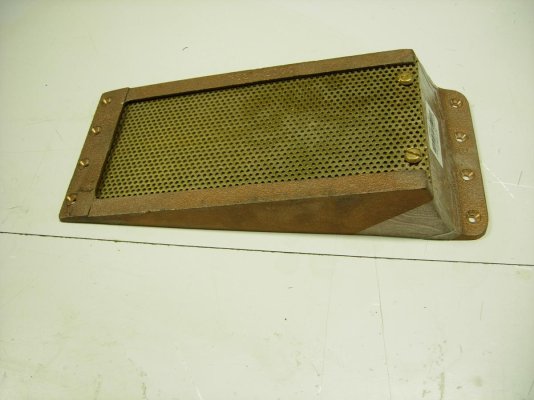
Ted
On the outside I have a very large wedge style strainer. Because of its size and number of holes, the vacuum effect at each hole is quite small. As a result, most stuff just slides past the surface instead of getting stuck to it. Inside is a traditional strainer with smaller holes to make sure nothing gets past that won't go through the heat exchanger tubes.
The outside strainer:

Ted
helm
Senior Member
One caveat is this, if you have a faster boat and use a scoop style strainer as OC diver pictured, its possible to force water past an impeller and flood a generator while underway if its not running or the thru hull is not closed.
Here’s a nice article to peruse
https://stevedmarineconsulting.com/wp-content/uploads/2014/03/Strainers127_02.pdf
Here’s a nice article to peruse
https://stevedmarineconsulting.com/wp-content/uploads/2014/03/Strainers127_02.pdf
HopCar
Guru
- Joined
- Aug 20, 2011
- Messages
- 5,308
- Vessel Name
- Possum
- Vessel Make
- Ellis 28
I believe in progressive screening.
On the outside I have a very large wedge style strainer. Because of its size and number of holes, the vacuum effect at each hole is quite small. As a result, most stuff just slides past the surface instead of getting stuck to it. Inside is a traditional strainer with smaller holes to make sure nothing gets past that won't go through the heat exchanger tubes.
The outside strainer:
View attachment 91717
Ted
I put one of those on my engine intake and never had to clean the internal strainer. Some boats are now coming with this type of external strainer and no internal strainer.
Helm,
If you use them on something that could be harmed by the scooped water pressure, I wonder if drilling some holes on the back slide would relieve the pressure enough to prevent damage?
STB
Guru
Hey Helm,
On my last boat, they had the scoop for the genset "backwards" to prevent that. Always wondered if it would get too little water that way -- but use showed otherwise.
The water coming out of the discharge thru-hull was like a fire hose and the genset stayed cool. I think someone had over-sized the raw water pump at some point. It was crazy flow, even underway.
...but it was a 10kn trawler, not a sportfisher.
At any rate, I never the idea of in taking water from what looked to me to be a low pressure area that could even imaginably have suction and had thought of replacing the strainer...but didnt want to "fix" what wasn't acting broke.
On my last boat, they had the scoop for the genset "backwards" to prevent that. Always wondered if it would get too little water that way -- but use showed otherwise.
The water coming out of the discharge thru-hull was like a fire hose and the genset stayed cool. I think someone had over-sized the raw water pump at some point. It was crazy flow, even underway.
...but it was a 10kn trawler, not a sportfisher.
At any rate, I never the idea of in taking water from what looked to me to be a low pressure area that could even imaginably have suction and had thought of replacing the strainer...but didnt want to "fix" what wasn't acting broke.
sdowney717
Guru
- Joined
- Jan 26, 2016
- Messages
- 2,264
- Location
- United States
- Vessel Name
- Old Glory
- Vessel Make
- 1970 Egg Harbor 37 extended salon model
I also recommend the external strainer. I have 2 round screw on types.
One for the head, the other for the AC-raw water wash down.
Neither of those through hulls have an internal strainer.
They have worked great over many years.
Even at the end of life for antifoul paints they have not clogged up with barnacles.
The generator has an internal strainer and no external strainer and it has clogged up the thru hull twice, once with grass, another time with a jelly fish.
Both main engines have a small eternal strainer, the kind built in to the thru hull, also works fine. I do have internal Sendure Y strainers on the those engines. Never clogs up.
One for the head, the other for the AC-raw water wash down.
Neither of those through hulls have an internal strainer.
They have worked great over many years.
Even at the end of life for antifoul paints they have not clogged up with barnacles.
The generator has an internal strainer and no external strainer and it has clogged up the thru hull twice, once with grass, another time with a jelly fish.
Both main engines have a small eternal strainer, the kind built in to the thru hull, also works fine. I do have internal Sendure Y strainers on the those engines. Never clogs up.
Last edited:
sdowney717
Guru
- Joined
- Jan 26, 2016
- Messages
- 2,264
- Location
- United States
- Vessel Name
- Old Glory
- Vessel Make
- 1970 Egg Harbor 37 extended salon model
Here is that sea grass which a storm brought up and it totally clogged the gen thru hull, but did not clog the AC thru hull. I had to unscrew the valve and poke it out. I may have also used the hose to back pressure it. And I think it happened multiple times that week.
Attachments
O C Diver
Guru
- Joined
- Dec 16, 2010
- Messages
- 12,868
- Location
- USA
- Vessel Name
- Slow Hand
- Vessel Make
- Cherubini Independence 45
One caveat is this, if you have a faster boat and use a scoop style strainer as OC diver pictured, its possible to force water past an impeller and flood a generator while underway if its not running or the thru hull is not closed.
Here’s a nice article to peruse
https://stevedmarineconsulting.com/wp-content/uploads/2014/03/Strainers127_02.pdf
On other styles of scoops that may be possible, not likely on the style I posted. The holes don't face the water stream, they're almost perpendicular to the flow. Have two of these scoops on my charter boat. The second one covers the feeds for the air conditioner and the raw water head. Both use a simple centerfusial pump and no water flows through the system at 20 knots unless you turn the pumps on. Now I can see in some of the other scoop designs sighted in the article, where a poorly designed raw water loop may flood at excessive speeds.
Ted


